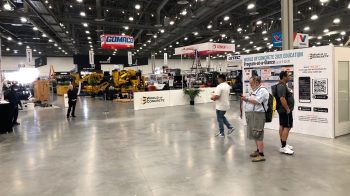Zappos CEO gambles on reviving downtown Las Vegas
Share Now on:
Zappos CEO gambles on reviving downtown Las Vegas
Kai Ryssdal: There’s a real sense in Las Vegas that it needs something else — something more than just gambling and hotels — to get housing and the whole economy going again.
That’s where the guy selling shoes comes in. Tony Hsieh is the CEO of Zappos. He brought a couple of thousand jobs with him when he brought his company to town eight years ago. But more important for this city right now is what he’s doing with his money: $350 million from his own pocket to revitalize downtown Las Vegas.
First of all, yes, Las Vegas has a downtown. It’s a couple of miles north of The Strip. Hsieh’s going to move Zappos headquarters there to the old city hall. It’s right around the corner from a building, he leased out a couple dozen apartments for him and some of his top employees.
Zach Ware: Hi, how are you doing? I’m Zach.
Zach Ware is in charge of making a lot of the downtown stuff happen. We get the tour: a media room, and a room with live plants on the walls. Yeah, I know about that either.
Ware: I just missed the most important room — the closet with all the Razor scooters in it.
The whole point is to create an environment that keeps employees and their families near each other, working and living in the same urban space.
Thing is, the downtown Las Vegas urban space is pretty bleak.
Ryssdal: So let’s look out the window. We have a parking structure — 1, 2, 3, 4, 5, 6, 7, 8, I will stop counting, vacant lots. There’s a 7-11.
Ware: I see it differently. One of the greatest things about downtown Las Vegas, and one of the most challenging things, is that in most urban revitilizations, you have a bunch of empty buildings. You cana coffeeshop in in a matter of months. In downtown Las Vegas, there is a lot of empty land, so our team has set about to re-create the city — physically.
Hseih and I sat down at one of the new businesses he helped bring to the neighborhood: The Beat Coffee House.
Tony Hsieh: It was almost too good to be true — that city hall was two few blocks away. When we first learned about the opportunity, we first surveyed our employees and said, ‘Oh we’re going to build our dream campus, so give us suggestions for what you would like to see on a dream campus. And come up with anything, the sky is the limit.’ And our No. 1 request was actually doggy daycare. And so we went through this process, but as we were going through the process we realized that these campuses for Nike, Google, Apple, may be great for their employees. But they’re actually very insular. That doesn’t really integrate or contribute to the community around them. What if we took more of an NYU-type of approach, where the campus kind of blends in with the city and you can’t really tell where one begins and the other ends.
Ryssdal: Which is great except there’s nothing here?
Hsieh: Well, except there is.
Ryssdal: You’ve got a coffee shop, right?
Hsieh: We’ve got a coffee shop now. And we’ve got a number of bars and so on for employees to interact with each other at night. And so the plan by the time we move, it’ll be closer to 2,000 employees moving. That alone could be $10 million to $20 million a year just into the local bar economy.
Ryssdal: You’ve got a whole lot of your own money in this, hundreds of millions of dollars. What’s your upside?
Hsieh: I guess, from a selfish perspective, it’s just I live here. I live a block from here, so I want to help create the neighborhood I’m going to be living in. From a business perspective on the Zappos side, we believe that if we invest in the community, invest in the Zappos side, that’s ultimately going to attract and retain more employees — so it’s going to pay for itself in the long run. So it’s one of those things where it’s just a win-win for everyone.
Ryssdal: You and I spoke out at Zappos headquarters two year ago about the company and your role in building the culture out there. It strikes me that you are more invested in this project than you are in Zappos. Not in terms of hours per day, but you’ve got a passion for this. This is something that has struck some chord for you.
Hsieh: What we’re doing collectively downtown — and it’s not just downtown project, the company is not just Zappos — it’s really the whole community. What we can do together is actually probably the most important thing that we can be doing for Zappos right now because if we get this wrong, it’s a 30-year mistake that we can’t recover from.
Ryssdal: Zappos CEO Tony Hsieh in downtown Las Vegas.
There’s a lot happening in the world. Through it all, Marketplace is here for you.
You rely on Marketplace to break down the world’s events and tell you how it affects you in a fact-based, approachable way. We rely on your financial support to keep making that possible.
Your donation today powers the independent journalism that you rely on. For just $5/month, you can help sustain Marketplace so we can keep reporting on the things that matter to you.


















